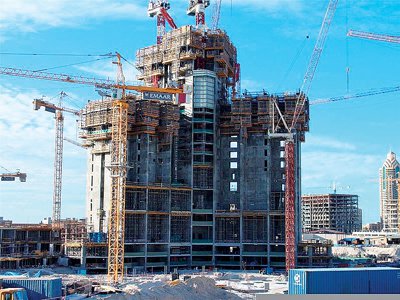Phuket business: Skyscrapers and economic woe

PHUKET: There’s an economic-cycle theory based on the link between the building of skyscrapers and economic strife. Guess what it’s called? Correct: the Skyscraper Index.
While many trends and theories these days are based on cycles, this economical theory is based on the completion of skyscrapers. So what is this theory and does it have any credibility?
Let’s first unravel the theory and then you can make up your own minds.
A tall index: Barclays recently published the new Skyscraper Index which shows there is an unhealthy correlation between the construction of the world’s next tallest building and an impending financial crisis. Sounds far-fetched, and is there any evidence to support this theory? All we can do is look at the historical time that Barclays is drawing this information from.
1873-1878 The long depression: The United States economic recession with bank failures that came to be known as the “Long Depression” coincided with the construction of the Equitable Life Building in 1873. At the time the building was the first skyscraper at a height of 142 feet.
1890, British banking crisis and world recession: The 309-foot New York World building, also known as the Pulitzer building and Chicago’s 269-foot Auditorium completed in 1889, coincided with the British banking crisis of 1890, and a world recession.
1893, US panic marked by the collapse of railroad over-building: The building of Chicago’s 302-foot Masonic Temple; the 348-foot Manhattan Life Building; and the 353-foot Milwaukee City Hall, coincided with the collapse of railroad overbuilding. It also coincided with a string of bank failures and a run on gold.
Still don’t see the link? Let’s look at some more recent examples.
1973-1975, US and world economic crisis: The 1972 construction of One World Trade Center; the 1973 completion of Two World Trade Center; and the 1974 construction of the Sears Tower in Chicago, coincided with a period of speculation in monetary expansion from foreign lending. It also coincided with the collapse of the Bretton Woods system, a rise in oil prices which caused a global economic crisis, and speculation in stocks, property, ships and aircraft.
1997-1998, Asian economic crisis: The Asian economic crisis, currency devaluation and speculation in stock and property, coincided with the completion of the Petronas Towers in 1997. The 1,483-foot Petronas Towers were the tallest buildings in the world, but also heralded the start of the Asian financial crash.
2000-2003, Dot com bubble: The construction of the 1,671-foot Taipei 101 skyscraper began in 1999 and was completed in 2004. The duration coincided with the recession in the early 2000s and the tech bubble.
2007-2010, The great recession: The 2010 completion of the tallest building in the world, the 2,717-foot Burj Khalifa, Dubai, coincided with the current global financial crisis.
So is this information reliable? When investing you have to take into account many factors, but I firmly believe trusting just “one” indicator, like the Skyscraper Index, is foolish. But there does seem to be an undeniable trend between the completion of skyscrapers and economic misfortune around the globe.
Investors look at everything from macro indicators like inflation, unemployment and GDP growth, to more bizarre ones like the diaper-rash indicator and the hemline index to measure the health of the economy.
Should we hold our breaths as the next world’s tallest skyscraper is built? Well, looking to China where 53 per cent of the world skyscrapers currently under construction are, and India where 14 new skyscrapers are currently underway; the economic prosperity in those regions don’t look set to falter any time soon.
David Mayes MBA lives in Phuket and provides wealth management services to expatriates around the globe, specializing in UK pension transfers. He can be reached at 085-335-8573 or david.m@faramond.com.
— Anthony Lyman
Latest Thailand News
Follow The Thaiger on Google News:


























